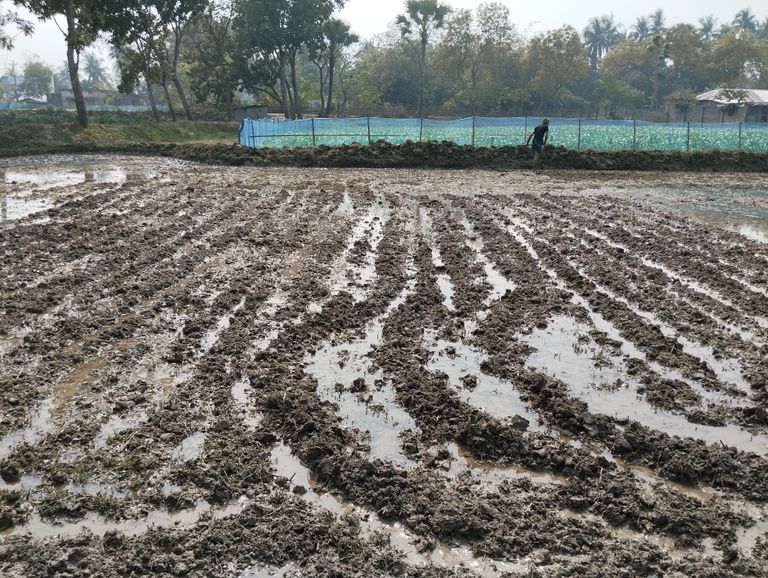
Land Preparation for Paddy Cultivation.
Paddy (rice) cultivation is a crucial part of agriculture, particularly in countries where rice is a staple food. Proper land preparation is essential to ensure a high yield and healthy crop growth. This blog will discuss the step-by-step process of preparing land for paddy cultivation, covering soil preparation, plowing, leveling, water management, and nutrient enrichment.
Importance of Land Preparation
Land preparation is a vital process that helps improve soil conditions for better crop growth. Properly prepared land ensures:
Good soil aeration and structure
Proper water retention and drainage
Efficient weed control
Nutrient availability for the plants
Reduction of pest and disease risks
Steps in Land Preparation for Paddy Cultivation
- Selection of the Land
The first step in rice cultivation is selecting a suitable field. Paddy fields should have:
A flat or slightly sloped surface
Clayey or loamy soil that retains water
Access to an adequate water supply
Good drainage to prevent waterlogging
- Initial Plowing and Tillage
Plowing is essential for loosening the soil and improving its structure. The process involves:
Primary Plowing: The first round of plowing, usually done with a tractor or bullock-drawn plow, breaks the hard soil.
Secondary Plowing: Further breaking down of soil clumps and leveling the field for better seedbed preparation.
Harrowing: The use of a harrow to refine the soil texture and remove weeds.
- Leveling the Land
Leveling helps maintain uniform water distribution across the field. It prevents water stagnation in some areas while ensuring that all plants receive adequate moisture. Farmers use wooden or laser-leveling tools for this purpose.
- Water Management and Puddling
Irrigation: The field should be flooded with water to soften the soil and create a muddy texture. This step is crucial for transplanting rice seedlings.
Puddling: This involves plowing the field while it is flooded to mix soil and water thoroughly. Puddling improves soil fertility, suppresses weeds, and enhances root establishment.
- Addition of Organic Matter and Fertilizers
To enrich the soil, farmers add:
Organic Manure: Compost, farmyard manure, or green manure improves soil fertility.
Chemical Fertilizers: Nitrogen (N), Phosphorus (P), and Potassium (K) fertilizers are added based on soil test recommendations.
- Weed and Pest Control
Before planting, it is crucial to remove weeds and pests to ensure a healthy growing environment. Methods include:
Manual Weeding: Removing weeds by hand or using mechanical tools.
Herbicides: Applying pre-emergence herbicides to control weed growth.
Pest Control Measures: Treating soil with bio-pesticides or chemical pesticides to prevent insect infestations.
Final Preparation Before Planting
The land should be flooded with 2-5 cm of water before transplanting rice seedlings.
The soil should be soft and well-mixed to allow easy root penetration.
Farmers ensure that the field is free from excessive weeds and pests before planting.
Proper land preparation is the foundation of a successful paddy crop. By following these steps—plowing, leveling, puddling, fertilizing, and weed control—farmers can create an optimal growing environment for rice. With well-prepared land, paddy plants will have better root growth, higher nutrient absorption, and increased yield potential. Would you like more information on specific rice-growing techniques? Let me know in the comments.
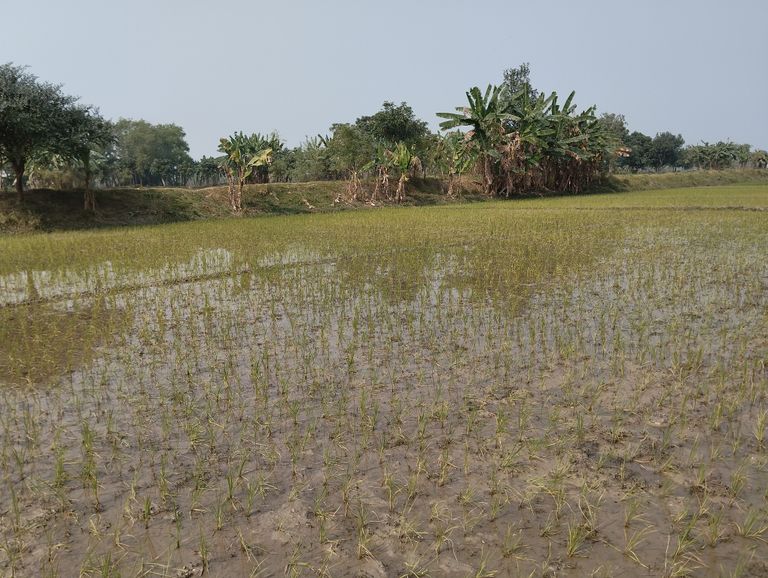
Proper Method of Transplanting Rice Seedlings
Rice is one of the most important staple crops in the world, providing food for billions of people. Proper transplanting of rice seedlings is crucial for achieving a high yield and ensuring healthy plant growth. In this blog, we will discuss the step-by-step process of transplanting rice seedlings correctly.
- Importance of Proper Transplanting
Transplanting rice seedlings correctly ensures:
Healthy plant growth
Proper spacing and uniform plant density
Better resistance to pests and diseases
Increased yield and higher grain quality
- Preparing for Transplanting
Before transplanting, it is essential to prepare both the seedlings and the field properly.
A. Selection of Healthy Seedlings
Choose seedlings that are 20–25 days old (for short-duration varieties) or 25–30 days old (for long-duration varieties).
The seedlings should have 4–5 leaves and a height of 15–20 cm.
Ensure that the roots are well-developed and free from diseases or pests.
B. Land Preparation
Plow the field 3–4 times to break up soil clumps and create a soft, muddy surface.
Level the field to ensure even water distribution.
Apply organic manure or compost to improve soil fertility.
Maintain a 3–5 cm layer of standing water before transplanting.
- Transplanting Methods
There are three main methods of transplanting rice seedlings:
A. Random Method
Seedlings are planted without a specific spacing pattern.
This method is common in traditional farming but leads to uneven plant distribution.
B. Line Transplanting Method
Seedlings are planted in straight rows at a uniform distance.
It allows for easy weeding, fertilization, and irrigation.
The recommended spacing is 20 cm × 15 cm for normal varieties and 25 cm × 20 cm for high-yielding varieties.
C. Square Method
Seedlings are planted at equal distances in both directions, forming squares.
This method allows for better aeration, sunlight exposure, and easier management.
- Steps for Transplanting Rice Seedlings
Step 1: Pulling the Seedlings
Uproot the seedlings gently to avoid root damage.
Wash off excess mud from the roots.
Keep the seedlings in bundles for easy handling.
Step 2: Spacing and Planting Depth
Maintain the recommended spacing of 20 cm × 15 cm or 25 cm × 20 cm.
Transplant 2–3 seedlings per hill for normal varieties and 1–2 seedlings per hill for hybrid varieties.
Plant seedlings at a depth of 2–3 cm (not too deep, as it can stunt growth).
Step 3: Water Management
Keep 3–5 cm of standing water in the field for the first 2 weeks.
After that, maintain 5–10 cm of water to prevent weed growth and ensure nutrient availability.
Step 4: Fertilization
Apply nitrogen (N), phosphorus (P), and potassium (K) fertilizers based on soil test results.
Use organic manure to improve soil health and reduce chemical dependence.
Split fertilizer applications into different stages: basal, tillering, and panicle initiation.
Step 5: Weed and Pest Control
Use manual weeding or herbicides to control weeds.
Monitor the field for common pests like stem borers, leaf folders, and brown planthoppers.
Apply biological or chemical pesticides only if pest infestation is severe.
Step 6: Monitoring and Maintenance
Regularly check for diseases such as blast, bacterial blight, and sheath blight.
Ensure proper water drainage to prevent fungal infections.
Maintain proper aeration to encourage healthy root development.
- Advantages of Proper Transplanting
Higher Yield: Proper spacing and seedling management lead to better growth and grain production.
Stronger Plants: Well-spaced seedlings receive sufficient nutrients, water, and sunlight.
Reduced Pest and Disease Incidence: Proper aeration and healthy root growth reduce vulnerability to pests.
Efficient Water Use: Proper field preparation helps conserve water.
Transplanting rice seedlings correctly is essential for achieving a high yield and ensuring sustainable rice production. By following proper methods, maintaining correct spacing, and using good agricultural practices, farmers can increase productivity and improve the quality of their harvest.
By adopting modern techniques and paying attention to details, farmers can ensure that their rice fields thrive, leading to greater food security and economic benefits.
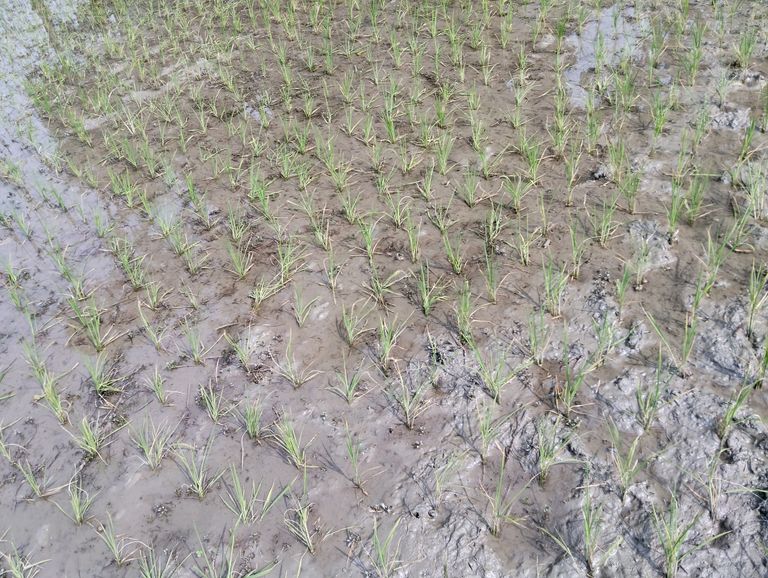
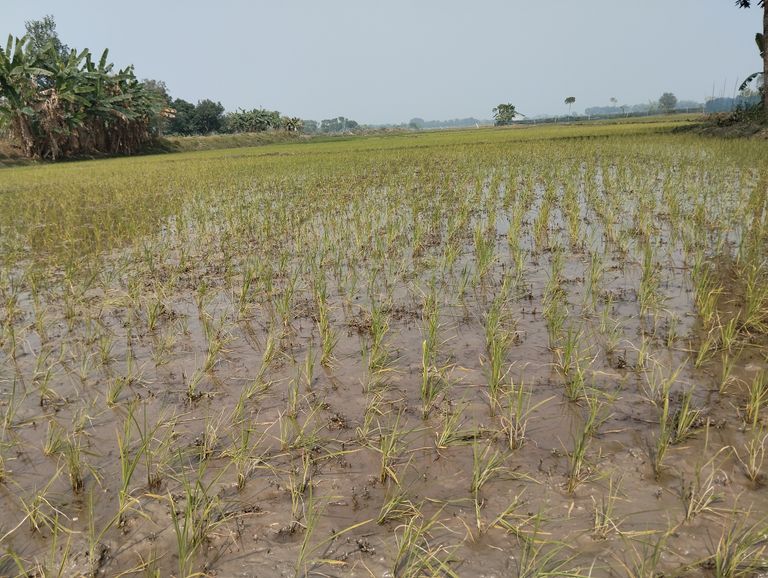
How to Increase Rice Yield: Effective Methods for Higher Productivity
Rice is a staple food for billions of people worldwide, and increasing its yield is crucial for food security. Farmers can achieve higher rice production by adopting modern agricultural practices, improving soil fertility, using high-yield seed varieties, and implementing proper water and pest management strategies. This blog explores the best techniques to increase rice yield effectively.
- Selecting High-Yielding Rice Varieties
Choosing the right rice variety is one of the most critical steps in achieving higher production. High-yielding and hybrid rice varieties have been developed to resist pests, diseases, and extreme weather conditions. Some popular high-yielding varieties include:
IR64 – Resistant to pests and diseases, suitable for irrigated conditions.
Swarna Sub-1 – Flood-tolerant and high-yielding.
MTU 1010 – Short-duration, high-yielding variety.
BRRI Dhan 29 & 50 – Popular in Bangladesh for high productivity.
- Soil Preparation and Fertility Management
Healthy soil is the foundation of high-yield rice production. Farmers should:
Conduct Soil Testing – This helps determine the nutrient levels and deficiencies.
Apply Organic Matter – Adding compost or farmyard manure improves soil structure and fertility.
Use Balanced Fertilizers – Nitrogen (N), Phosphorus (P), and Potassium (K) should be applied as per the soil test recommendations.
Recommended Fertilizer Application:
- Proper Land Preparation and Planting Techniques
Proper land preparation ensures better root development and efficient water use. Steps to prepare the land include:
Plowing and Leveling – A well-leveled field helps in uniform water distribution.
Spacing and Seedling Age – Maintain an ideal spacing of 20x20 cm and use seedlings of 25-30 days old for transplantation.
Direct Seeding vs. Transplanting – Direct seeding requires less labor, while transplanting gives better weed control.
- Efficient Water Management
Rice is a water-intensive crop, but excess water can reduce yield. Effective water management includes:
Alternate Wetting and Drying (AWD) – A water-saving technique that improves root growth and reduces methane emissions.
Maintain 5-7 cm Water Depth – Keeping this level of water during the tillering stage boosts yield.
Drain Water Before Harvest – Stop irrigation 7-10 days before harvesting to allow proper grain ripening.
- Weed and Pest Control
Weeds and pests can significantly reduce rice yield. Effective control measures include:
Pre-Emergence Herbicides – Apply herbicides like Butachlor or Pendimethalin after sowing but before germination.
Manual Weeding – Conduct hand weeding at 20 and 40 days after transplanting.
Pest Management – Common rice pests include:
Stem Borer – Controlled using pheromone traps or insecticides like Chlorantraniliprole.
Brown Plant Hopper (BPH) – Use resistant varieties and avoid excessive nitrogen use.
- Disease Management
Rice diseases like blast, sheath blight, and bacterial leaf blight can reduce yield. Prevention methods include:
Use Disease-Resistant Varieties – Such as BRRI Dhan 50 or IR64.
Crop Rotation – Helps reduce soil-borne pathogens.
Fungicide Application – Apply Tricyclazole for blast disease prevention.
- Harvesting and Post-Harvest Management
Timely harvesting ensures better grain quality and higher market value.
Harvest at 80-90% Grain Maturity – Delayed harvesting can lead to grain shattering.
Use Combine Harvesters – Reduces labor costs and minimizes post-harvest losses.
Proper Drying and Storage – Dry grains to 12-14% moisture content before storage to prevent mold and insect damage.
Increasing rice yield requires a combination of proper land preparation, high-yielding seed varieties, efficient water and pest management, and timely harvesting. By adopting modern agricultural techniques and best management practices, farmers can significantly boost rice productivity, ensuring food security and profitability. By implementing these strategies, you can maximize your rice production and contribute to sustainable agriculture. Happy farming.
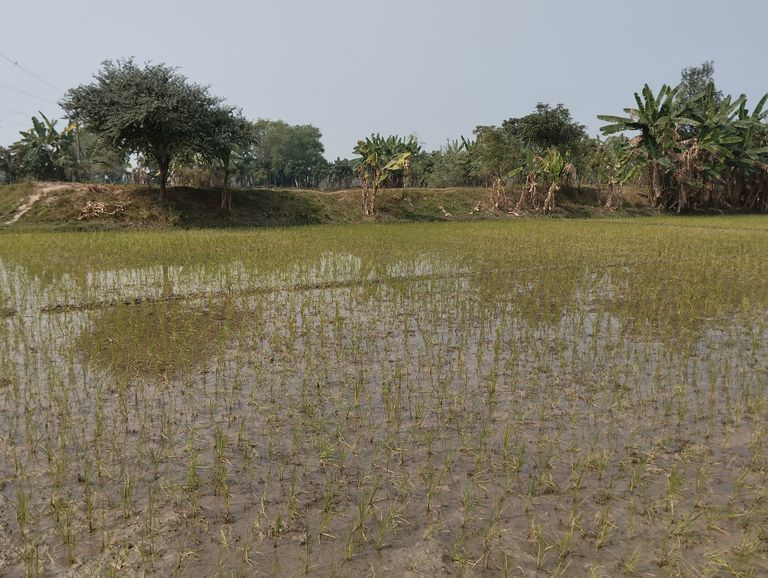
How to Increase Rice Yield: Effective Methods for Higher Productivity
Rice is a staple food for billions of people worldwide, and increasing its yield is crucial for food security. Farmers can achieve higher rice production by adopting modern agricultural practices, improving soil fertility, using high-yield seed varieties, and implementing proper water and pest management strategies. This blog explores the best techniques to increase rice yield effectively.
- Selecting High-Yielding Rice Varieties
Choosing the right rice variety is one of the most critical steps in achieving higher production. High-yielding and hybrid rice varieties have been developed to resist pests, diseases, and extreme weather conditions. Some popular high-yielding varieties include:
IR64 – Resistant to pests and diseases, suitable for irrigated conditions.
Swarna Sub-1 – Flood-tolerant and high-yielding.
MTU 1010 – Short-duration, high-yielding variety.
BRRI Dhan 29 & 50 – Popular in Bangladesh for high productivity.
- Soil Preparation and Fertility Management
Healthy soil is the foundation of high-yield rice production. Farmers should:
Conduct Soil Testing – This helps determine the nutrient levels and deficiencies.
Apply Organic Matter – Adding compost or farmyard manure improves soil structure and fertility.
Use Balanced Fertilizers – Nitrogen (N), Phosphorus (P), and Potassium (K) should be applied as per the soil test recommendations.
Recommended Fertilizer Application:
- Proper Land Preparation and Planting Techniques
Proper land preparation ensures better root development and efficient water use. Steps to prepare the land include:
Plowing and Leveling – A well-leveled field helps in uniform water distribution.
Spacing and Seedling Age – Maintain an ideal spacing of 20x20 cm and use seedlings of 25-30 days old for transplantation.
Direct Seeding vs. Transplanting – Direct seeding requires less labor, while transplanting gives better weed control.
- Efficient Water Management
Rice is a water-intensive crop, but excess water can reduce yield. Effective water management includes:
Alternate Wetting and Drying (AWD) – A water-saving technique that improves root growth and reduces methane emissions.
Maintain 5-7 cm Water Depth – Keeping this level of water during the tillering stage boosts yield.
Drain Water Before Harvest – Stop irrigation 7-10 days before harvesting to allow proper grain ripening.
- Weed and Pest Control
Weeds and pests can significantly reduce rice yield. Effective control measures include:
Pre-Emergence Herbicides – Apply herbicides like Butachlor or Pendimethalin after sowing but before germination.
Manual Weeding – Conduct hand weeding at 20 and 40 days after transplanting.
Pest Management – Common rice pests include:
Stem Borer – Controlled using pheromone traps or insecticides like Chlorantraniliprole.
Brown Plant Hopper (BPH) – Use resistant varieties and avoid excessive nitrogen use.
- Disease Management
Rice diseases like blast, sheath blight, and bacterial leaf blight can reduce yield. Prevention methods include:
Use Disease-Resistant Varieties – Such as BRRI Dhan 50 or IR64.
Crop Rotation – Helps reduce soil-borne pathogens.
Fungicide Application – Apply Tricyclazole for blast disease prevention.
- Harvesting and Post-Harvest Management
Timely harvesting ensures better grain quality and higher market value.
Harvest at 80-90% Grain Maturity – Delayed harvesting can lead to grain shattering.
Use Combine Harvesters – Reduces labor costs and minimizes post-harvest losses.
Proper Drying and Storage – Dry grains to 12-14% moisture content before storage to prevent mold and insect damage.
Increasing rice yield requires a combination of proper land preparation, high-yielding seed varieties, efficient water and pest management, and timely harvesting. By adopting modern agricultural techniques and best management practices, farmers can significantly boost rice productivity, ensuring food security and profitability.
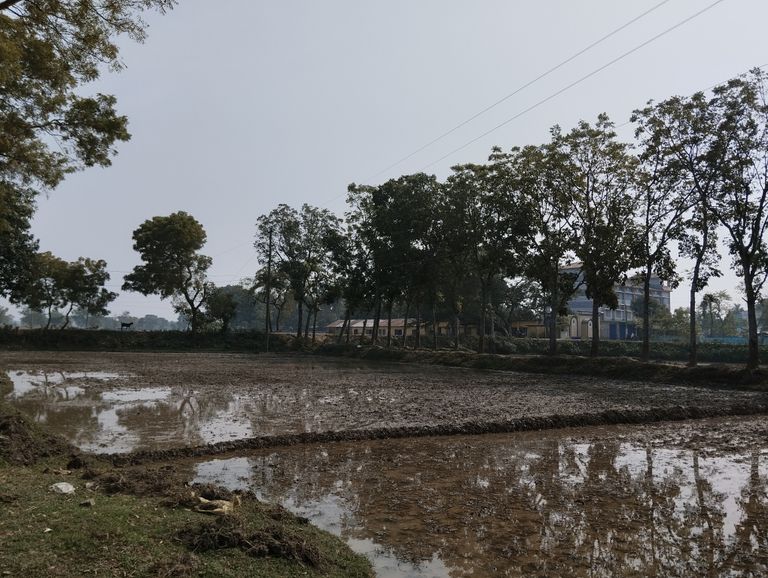
Rice is a water-intensive crop, but excess water can reduce yield. Effective water management includes:
Alternate Wetting and Drying (AWD) – A water-saving technique that improves root growth and reduces methane emissions.
Maintain 5-7 cm Water Depth – Keeping this level of water during the tillering stage boosts yield.
Drain Water Before Harvest – Stop irrigation 7-10 days before harvesting to allow proper grain ripening.
- Weed and Pest Control
Weeds and pests can significantly reduce rice yield. Effective control measures include:
Pre-Emergence Herbicides – Apply herbicides like Butachlor or Pendimethalin after sowing but before germination.
Manual Weeding – Conduct hand weeding at 20 and 40 days after transplanting.
Pest Management – Common rice pests include:
Stem Borer – Controlled using pheromone traps or insecticides like Chlorantraniliprole.
Brown Plant Hopper (BPH) – Use resistant varieties and avoid excessive nitrogen use.
- Disease Management
Rice diseases like blast, sheath blight, and bacterial leaf blight can reduce yield. Prevention methods include:
Use Disease-Resistant Varieties – Such as BRRI Dhan 50 or IR64.
Crop Rotation – Helps reduce soil-borne pathogens.
Fungicide Application – Apply Tricyclazole for blast disease prevention.
- Harvesting and Post-Harvest Management
Timely harvesting ensures better grain quality and higher market value.
Harvest at 80-90% Grain Maturity – Delayed harvesting can lead to grain shattering.
Use Combine Harvesters – Reduces labor costs and minimizes post-harvest losses.
Proper Drying and Storage – Dry grains to 12-14% moisture content before storage to prevent mold and insect damage.